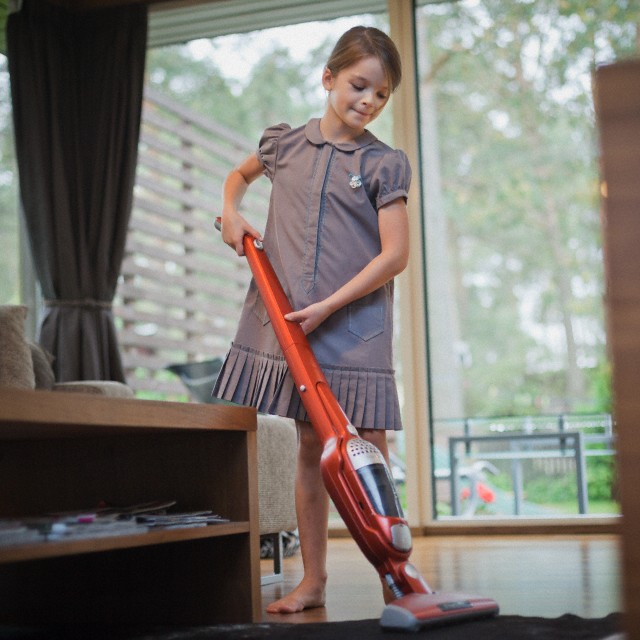by Tamar Chansky, Ph.D.
Founder, Worrywisekids.org

I don’t know about you, but the beginning of the summer makes me itchy. It’s not the heat, or the mosquito bites, or the mountains of school papers and art projects that no one wants to sort or part with that are still parked in the front hall even though school let out weeks ago. No, for me, the itchiness has to do with being a working mom, faced with the reality that kids are home for weeks now with N-O-T-H-I-N-G to do. Clearly children have a slightly different take on the situation: I believe it has best been captured by a clothing line motto, it goes something like this: life is good.
Even if kids are in camp, there’s still a lot of downtime after and the television and video games beckon. Let me make myself clear. I’m not one of those parents who worries about entertaining my kids so that they won’t be bored—no, the problem is much more basic: it’s the combination of my too much to do life, with their too little to do life, which are like two very different weather systems colliding in my kitchen—the result: a storm, a meltdown, me being a monster, feeling like the kids are (forgive me) leisure monsters, call it what you will, it is not too pretty. But I figured out a solution and it’s a win-win and it’s called the Common Good List.
Here’s how it worked for me:
At the start of last summer, I wrote out three pages of what I called “common good tasks” and posted them on the fridge. Some tasks were daily necessities like folding laundry, cooking, doing dishes, others were more periodic household maintenance: cleaning shelves in the refrigerator, recycling old notices from the school year that were on the bulletin board, organizing the CDs (do people still listen to those?) refilling spice bottles, etc. I told my daughters (ages 11 and 19 at the time) to figure out between the two of them who would do what, or what tasks they might share. I wanted them to put in about 45 minutes a day for the common good. If they were doing that, the other hours of the day could be theirs.
It worked beautifully. And it worked way beyond what I had imagined. The girls really applied themselves to the jobs, taking pride in cleaning cabinets, making suggestions about how things could be better organized, staying after us throughout the summer to maintain the new-found systems they had established. One child called and canceled subscriptions to sales catalogs, shredded mail, folded laundry, and wiped down and organized kitchen shelves the other child valiantly cleaned out the fridge (lots of good science project material there) did some cooking, watered plants and took out the trash.
Every day that I saw the fruits of my daughters’ labors, I felt immense gratitude and, importantly, told them so. I felt supported and that things were more balanced in our home life.
Now, some parents (although I can’t imagine many) may read this and think that I’m expecting too much from my kids. Jealousy works in interesting ways. Don’t hate me because I’m desperate, I mean resourceful… but there’s some pretty strong science behind my desperation, I mean my resourcefulness, too.
Chores are associated with future success in life. Why?
Aside from helping busy families make things work, chores have benefits far beyond the immediate. When a child has a task that isn’t instantly entertaining and enjoyable—it challenges that child to find the fun, to sustain the effort, to be patient, to work towards a goal that might not be immediately obvious or gratifying but in the end—it is. Kids entrusted with responsibilities are earning your trust, are being seen as important contributing members of their first community: family. This sets them up for seeing themselves in this light as they venture out into bigger versions of communities—school, jobs, towns, the world at large. This is how they learn that they count. This is where an authentic sense of self-esteem, self-worth and self-efficacy come from. It reinforces lifelong skills of working hard and also working together, that each of us contributes to the common good—to the greater good.
Also, children begin to appreciate more the logic of how a household works. That there are not (as far as we know) magic fairies that come in during the night and get things done. If kids help out, then parents have more time to do other things with their kids, or to be less stressed and more present for the time that the family is together. This is real life. While there is no hard and fast research on this, you can imagine that it goes over a lot better to explain this plan in a calm, matter of fact way rather than like a jail sentence: e.g., “There are a lot of things that need to be done, if we all pitch in, we’ll get done faster and we’ll have more time to do other things. Let’s work together,” vs. “You’re lazy, turn off the tv and pitch in.”
Here are some ideas to get this started in your house:
How Much time? Rule of thumb is about 5-10 minutes for children under 7, Children age 8-10—15-25 minutes, Children over ten, 25-45 minutes. Be flexible, many children are certainly capable of more, but the point is to get into the habit of doing this work every day, or at least several times a week, so it’s not about seeing how much they can get done, but rather, how much they can get done without complaining too much.
Timing it Right “Common good time” is best scheduled for immediately before a more preferred activity. So for example, have common good time before you are going on a family outing to a park or swimming pool, or before tv-time, so the desire to get to the “dessert” part of the day will help your kids persevere through “dinner.”
Chore, Surprise! With younger children, put small chore ideas on pieces of paper and place the choices in a basket. Every day your child can choose a chore out of the basket—the element of surprise can make this more appealing to younger children.
Chore Time Flies When You’re a Superhero: For young kids turn clean up into a story— they are superheroes who need to save your house from utter chaos.
Whistle While You Work: Teens especially will want to bring their own music, and why not? Let them plug in if they’d like.
Team Meeting: If your kids are going to be especially resistant to this idea, rather than just telling them what to do, garner their cooperation by giving them the opportunity to identify tasks that they could see being useful to the family, and also… that they could see themselves doing. As long as it is useful it doesn’t matter what it is.
Clean Sweep: If you don’t have time to sit and make a list, but you want your kids to help out, institute a “clean sweep” time. Often this is about 15 minutes (let your child set the timer) before going out or before dinner where everyone selects a task or two to clean up the common areas of the house—toys, shoes, backpacks, mail, snack dishes etc. It’s not a deep cleaning, but it’s the important clearing and putting away of items back where they belong.
Appreciate All Efforts: Maybe your children won’t get the job done as well or as quickly as you would, but applaud and appreciate the effort even if the outcome is a work in progress. This isn’t a spot-check experience, you are reinforcing skills for life.
We are in year two of the common good list in our house, and without the meltdown or storm in the kitchen (mine that is) that preceded this intervention last year, this year I simply posted the list on the fridge and the girls jumped in.
The only risk of this plan is that it may work too well: sitting down to a nice lunch on vacation this year, my younger daughter gives me a disparaging look and announces that we really need to be keeping the place in better order—“Look!,” she observes, “The counters are already cluttered! Everyone should think of ways of organizing things as you put them away, then it is easy to make things look nice.”
Really?! I thought—but, but we’re on vacation…
Have I created a monster? Perhaps. But this kind I can live with, for me and the common good. Happy summer to all.
© Tamar Chansky, Ph.D., 2013


 I don’t know about you, but the beginning of the summer makes me itchy. It’s not the heat, or the mosquito bites, or the mountains of school papers and art projects that no one wants to sort or part with that are still parked in the front hall even though school let out weeks ago. No, for me, the itchiness has to do with being a working mom, faced with the reality that kids are home for weeks now with N-O-T-H-I-N-G to do. Clearly children have a slightly different take on the situation: I believe it has best been captured by a clothing line motto, it goes something like this: life is good.
I don’t know about you, but the beginning of the summer makes me itchy. It’s not the heat, or the mosquito bites, or the mountains of school papers and art projects that no one wants to sort or part with that are still parked in the front hall even though school let out weeks ago. No, for me, the itchiness has to do with being a working mom, faced with the reality that kids are home for weeks now with N-O-T-H-I-N-G to do. Clearly children have a slightly different take on the situation: I believe it has best been captured by a clothing line motto, it goes something like this: life is good.

